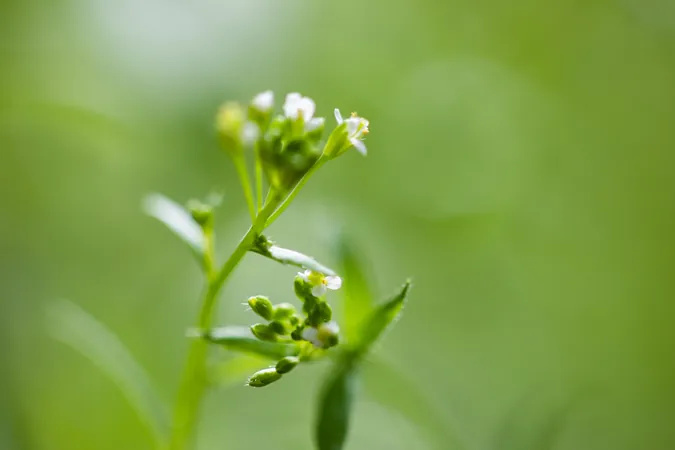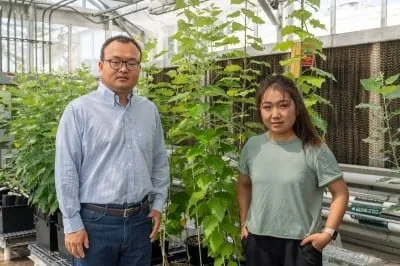
Unlocking Nature's Secrets: How Plants Time Their Blooming with Light and Temperature
2025-09-02
Author: Yu
While plants may seem stationary, they are continuously responding to their ever-changing environment. To ensure successful growth and flowering, they meticulously gauge factors like temperature, light intensity, and day length. But the mystery has lingered: how do they weave all this information together to initiate blooming?
A groundbreaking study from the Salk Institute has shed light on the genetic mechanisms that enable plants to harmonize the signals from light and temperature, dictating the timing of their flowering.
Published in Nature Communications, this research unveils the interplay between two vital genetic pathways that respond to blue light and cooler temperatures. This novel genetic module empowers plants to adjust their flowering to achieve optimal growth conditions.
In one pathway, blue light activates the PHOT2 receptor with the assistance of a protein called NPH3. Simultaneously, cooler temperatures trigger a transcription factor named CAMTA2, which enhances the expression of the gene EHB1. Significantly, EHB1 interacts with NPH3, creating a convergence point where blue light and low temperature signals meet. This genetic setup functions as a sophisticated coincidence detector, harmonizing the signals to prepare the plants for flowering.
This Salk study highlights a pivotal aspect of plant biology, covering growth, reproduction, and how plants process environmental information. The identification of this genetic mechanism also paves the way for the Salk Institute's Harnessing Plants Initiative to refine crop cultivation in response to shifting climate patterns.
First author Adam Seluzicki, a staff researcher at Salk, explained, "Unlike animals, which can move away from unfavorable conditions, plants are rooted in place. They must gather as much data as possible about their environment to react appropriately. We have uncovered a genetic system that enables them to synthesize blue light and low temperature cues, crucial for regulating key growth and reproduction phases—findings that hold monumental significance for future food production strategies."
The study also honors Joanne Chory of Salk, a renowned plant biologist whose contributions have profoundly impacted the field, especially following her passing on November 12, 2024.




 Brasil (PT)
Brasil (PT)
 Canada (EN)
Canada (EN)
 Chile (ES)
Chile (ES)
 Česko (CS)
Česko (CS)
 대한민국 (KO)
대한민국 (KO)
 España (ES)
España (ES)
 France (FR)
France (FR)
 Hong Kong (EN)
Hong Kong (EN)
 Italia (IT)
Italia (IT)
 日本 (JA)
日本 (JA)
 Magyarország (HU)
Magyarország (HU)
 Norge (NO)
Norge (NO)
 Polska (PL)
Polska (PL)
 Schweiz (DE)
Schweiz (DE)
 Singapore (EN)
Singapore (EN)
 Sverige (SV)
Sverige (SV)
 Suomi (FI)
Suomi (FI)
 Türkiye (TR)
Türkiye (TR)
 الإمارات العربية المتحدة (AR)
الإمارات العربية المتحدة (AR)